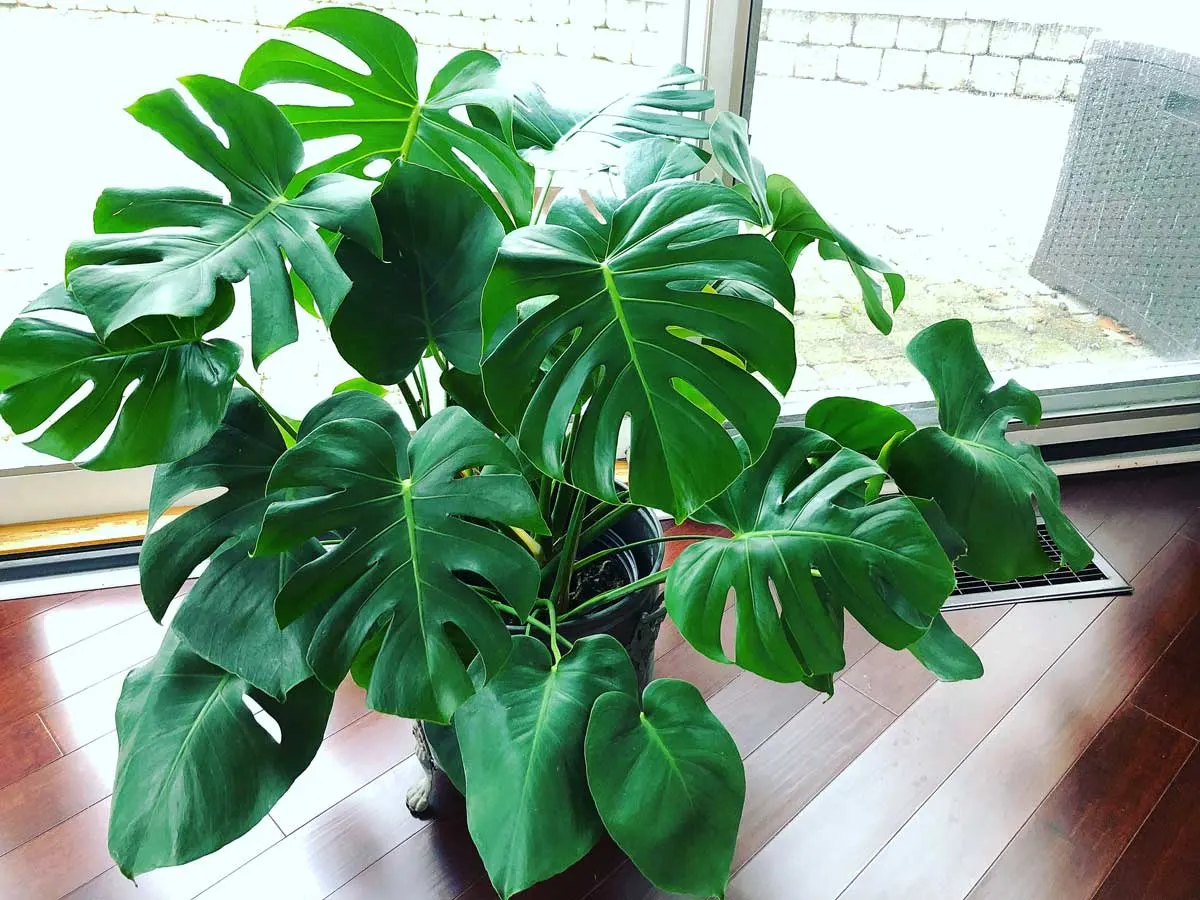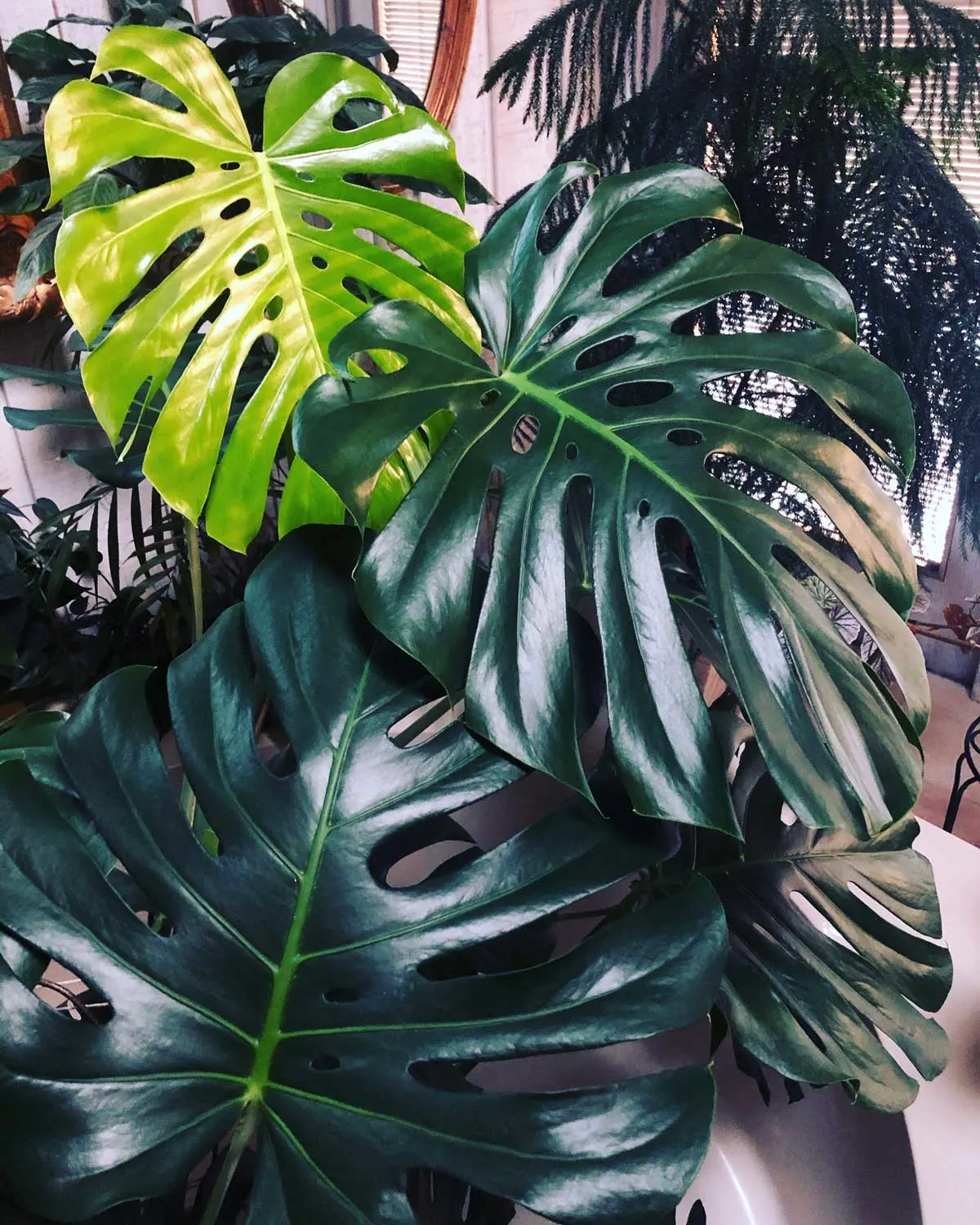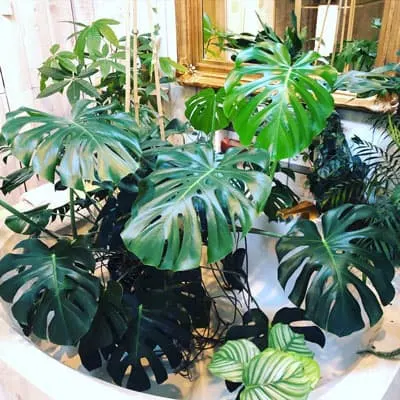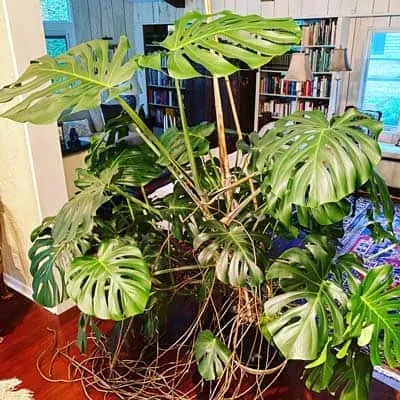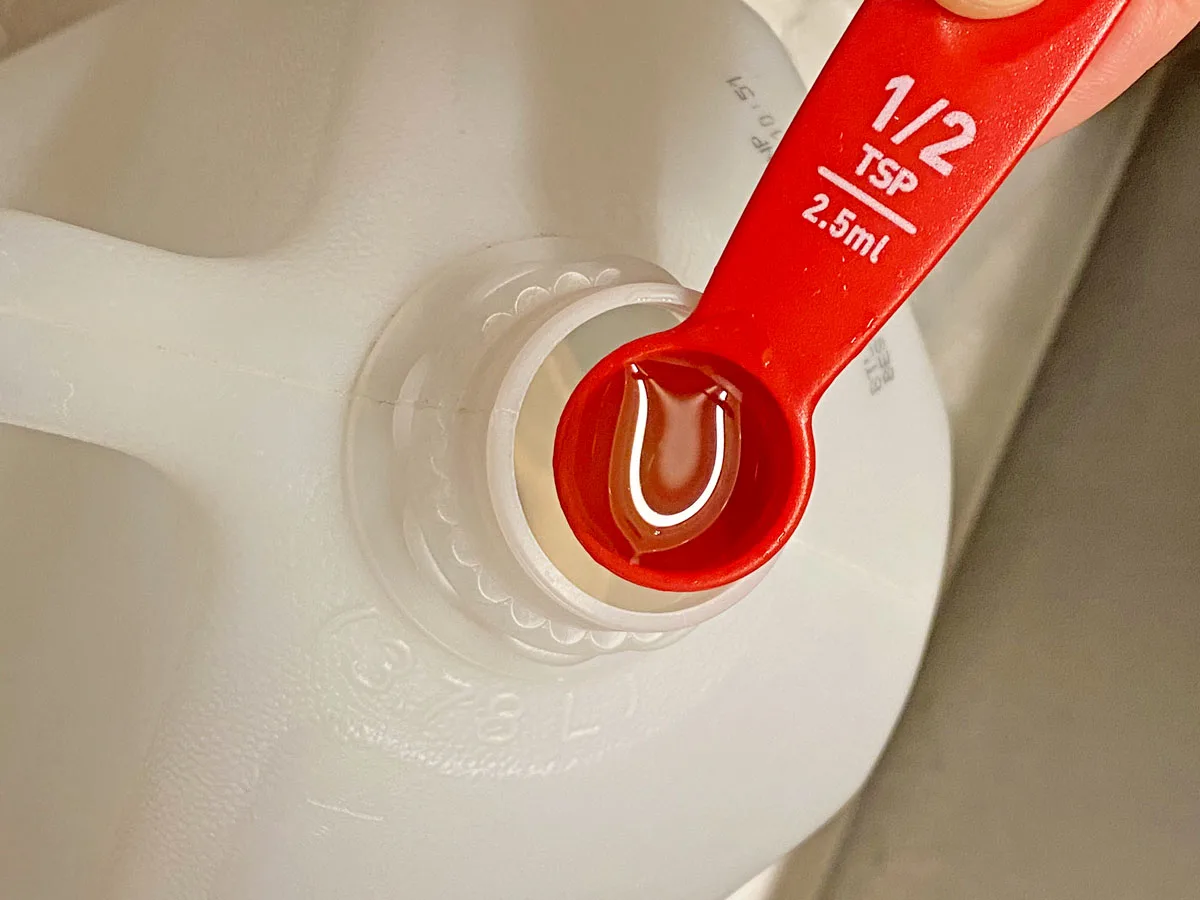Some of the links in this post may be affiliate links.
Is your Monstera falling over and you can’t seem to keep it upright? Keep reading because I’ll describe exactly why this happens and what you can do about it. It all stems from the nature of its growth habit, and I’ll provide some great options to help support your plant, whether it’s leaning to one side or just plain falling over.
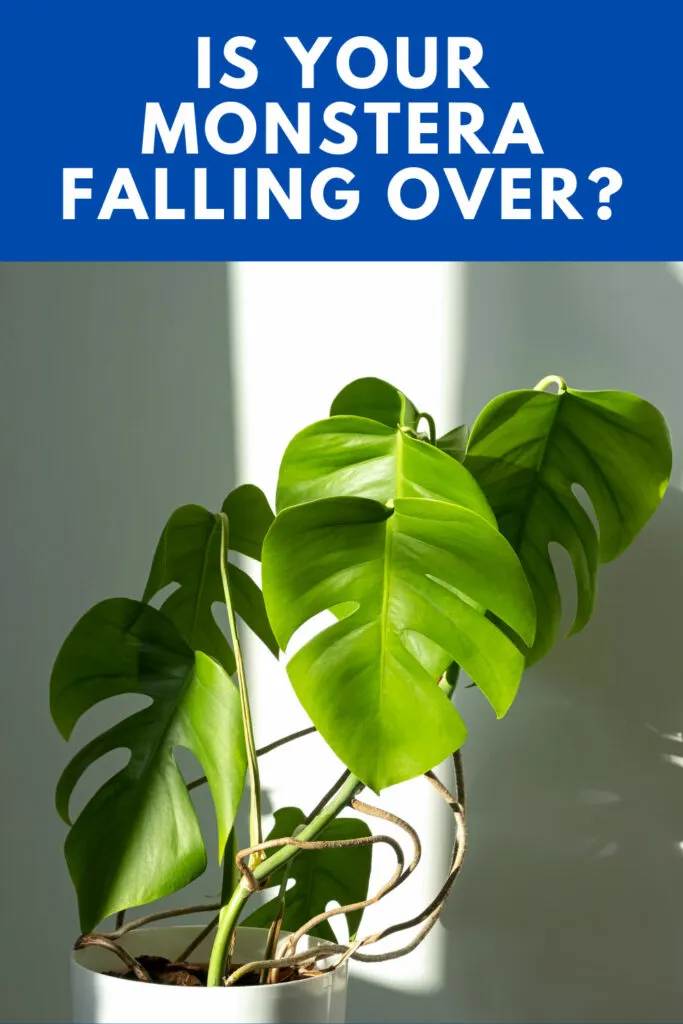
Table of Contents
MONSTERA DELICIOSA GROWTH HABIT
The key to understanding why your monstera is falling over is to know the growth habit of this plant in nature.
Monstera deliciosa is a Mexican native, and it grows in humid, tropical forests. After its seeds fall to the ground, the seedlings start creeping on the ground until they find a tree to attach onto so that they can start climbing.
This plant is considered a hemiepiphtye, which is simply a plant that lives part of its life cycle as an epiphyte (attached to trees in nature).
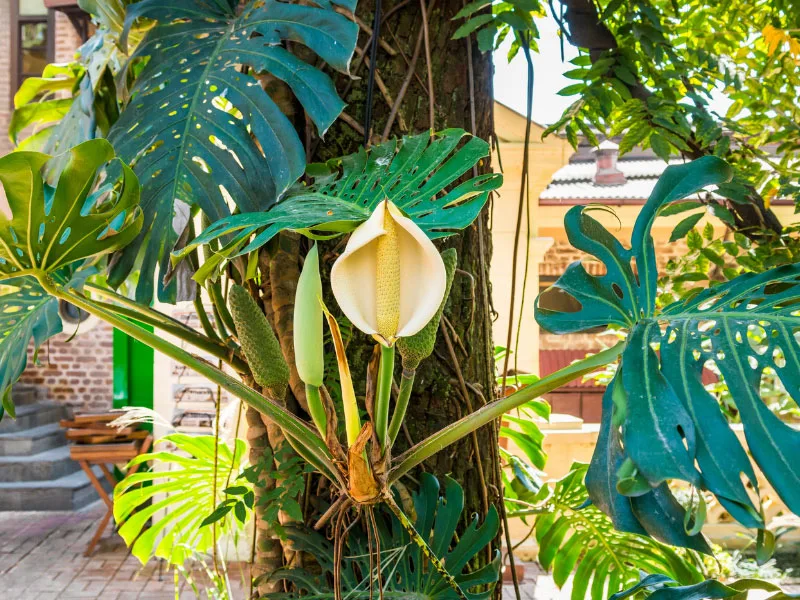
Monstera deliciosa grows a lot of aerial roots, and it uses them to attach onto surfaces, whether it’s a tree, a stone wall, or any other vertical surface.
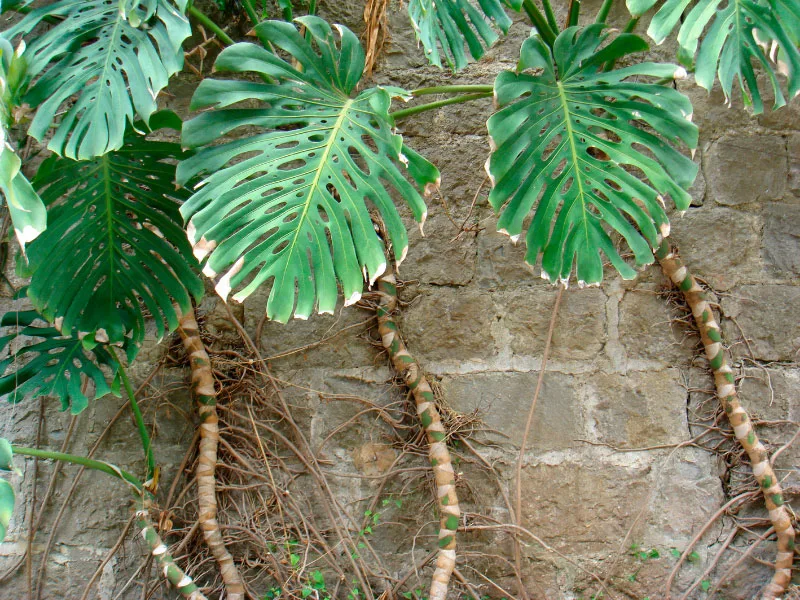
So, if you’re growing this plant indoors and it’s falling over or leaning, there is nothing wrong with your plant. It’s doing exactly what it’s support to do, but you’ll have to take the place of Mother Nature and give it a support!
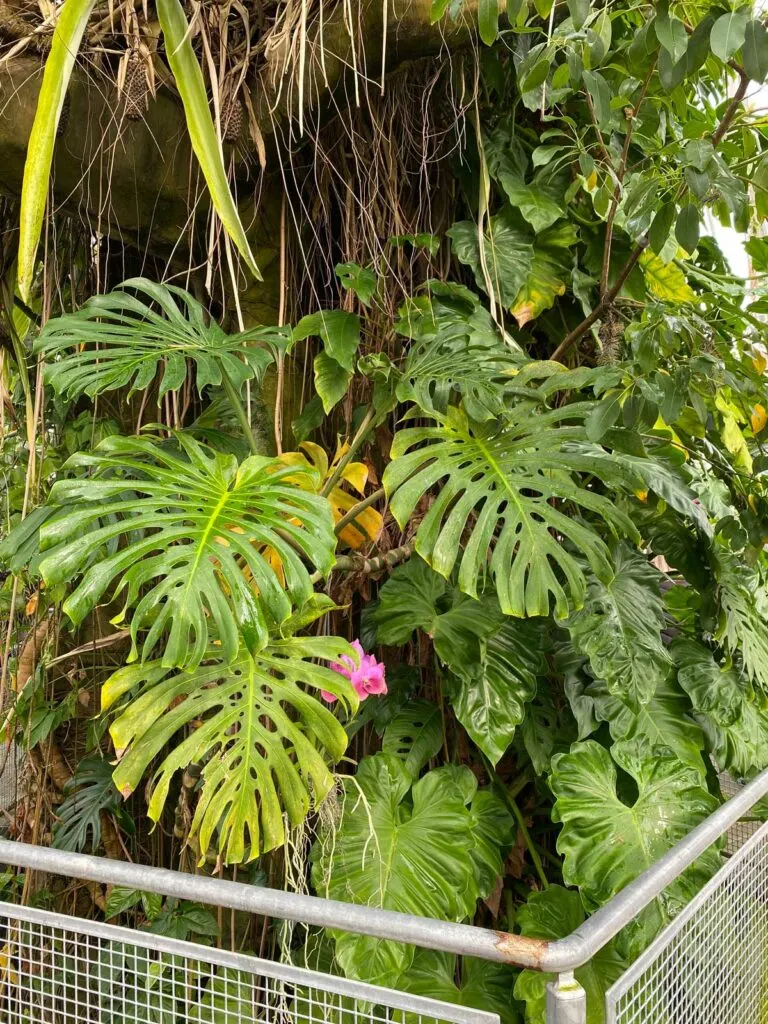
MONSTERA FALLING OVER? HERE ARE SOME SUPPORT IDEAS
When a Monstera deliciosa is still small, it won’t be apparent that it needs a support because it hasn’t vined out yet, but it’s beneficial to provide a support pretty early on, so it can get a good start.
Some support ideas that you can use are:
- Moss poles
- Bamboo or hardwood stake tripods
- Rough wood plank
- Single stake posts made out of coconut coir or other materials
Let’s take a closer look at each one.
1. MOSS POLE
One of the most popular supports for Monstera deliciosa is a moss pole. There are many moss poles on the market, but I’ve found most of them to be quite expensive and poor quality.
I prefer to make my own, and it’s actually quite easy!
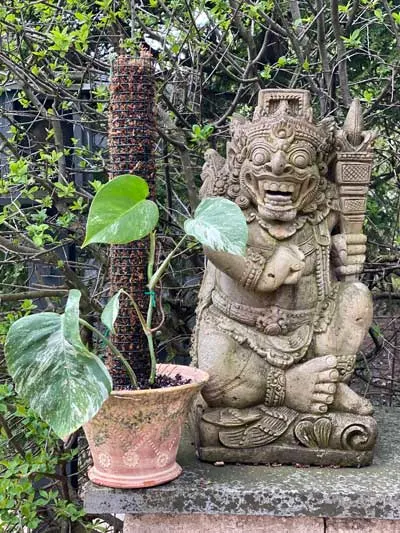
The moss poles are made from PVC coated hardware mesh, sphagnum moss, twist ties, and a plastic coated stake to reinforce the pole. You would simply need to keep the sphagnum moss moist, and the Monstera aerial roots grow into the moss.
Check out my DIY moss pole guide so you can make your own. They’re much sturdier, and much better quality than any pre-made ones out on the market.
You don’t NEED to use a moss post, and if you don’t feel like making one, there are other options. I find that moss posts are easiest to use when you only have 1 or 2 vines on your Monstera.
Otherwise, if you have a larger plant with several vines, I prefer the next method.
2. BAMBOO OR HARDWOOD STAKE TRIPOD
This is a super easy method that you can use for your Monstera deliciosa, and I’ve used this for my own large plant.
All you have to do is visit your local garden center and get the sturdiest bamboo stakes that you can find (you can even use hardwood tomato stakes). I’d recommend using ones that are 6 feet tall.
Simply drive 3 or 4 of them straight down into your pot, and tie all of them on top. I’ve driven the poles right into the existing pot, but you can also do this at the time of repotting.
Then at that point, loosely tie each Monstera vine to the stakes with twine, but don’t tie them too tightly though. You can use something like stretch tie tape that will stretch and expand as the plant grows.
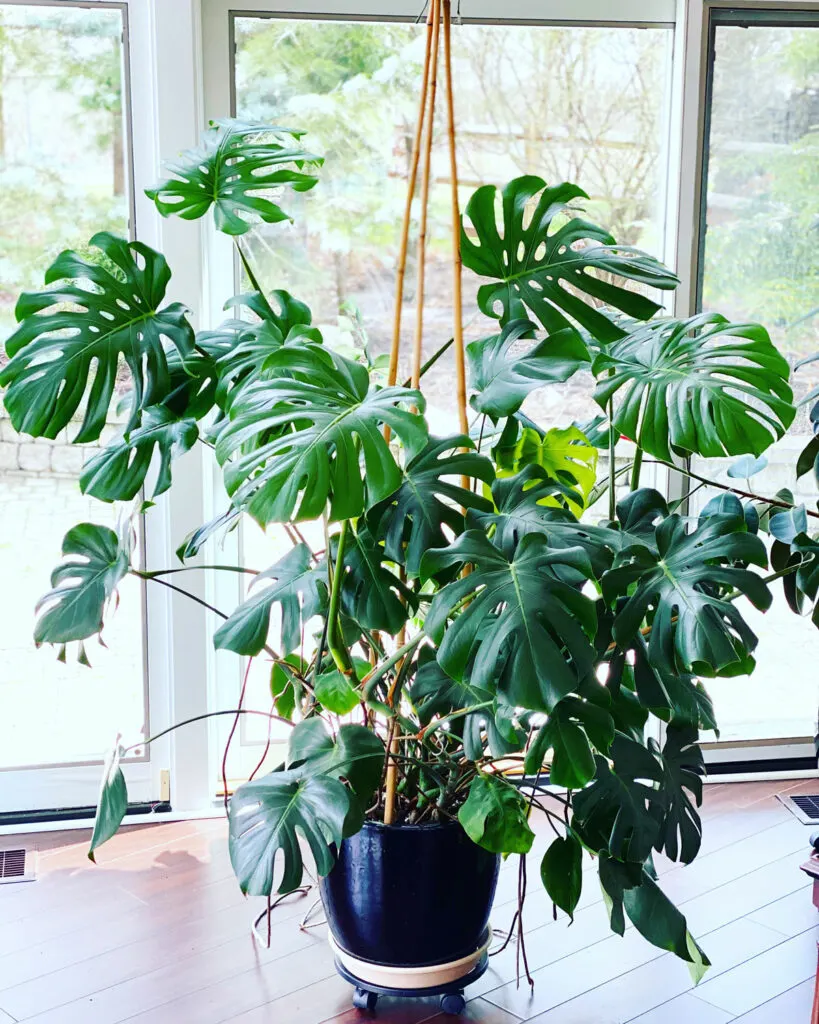
This method provides a very sturdy support for your plant. No more Monstera falling over!
3. ROUGH WOOD PLANK
Using a rough, wood plank made out of a rot resistant wood like cedar is another good option. This method works best when you need to repot your plant, so you can place the wood plank and the plant in the pot at the same time.
Then, simply secure the monstera vines to the wood plank with stretch tie tape and the plant will know what to do next! The aerial roots will start to attach to the wood plank as the plant grows upwards.
4. SINGLE STAKES MADE OUT OF COCONUT COIR OR OTHER MATERIAL
Another type of stake that you can purchase is a coco coir post. These are easy to extend and provide a good option for your plant.
You can also get creative and make your own pole like the one below with rope wrapped around a post. You can wrap and glue rope around a wooden post, PVC pipe, or any other cylindrical post. Get creative!
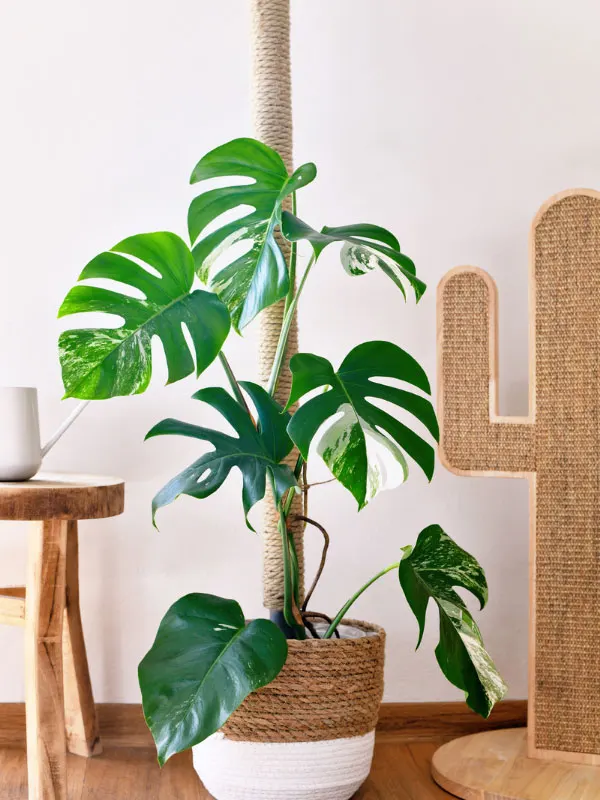
May you never have your Monstera falling over ever again, and I hope you have now been inspired to give your Monstera a support that it needs so that it can live up to its fullest potential!

